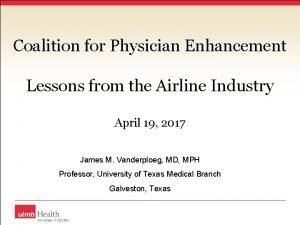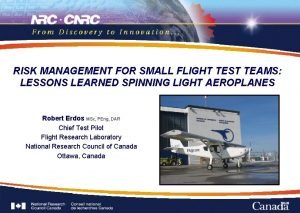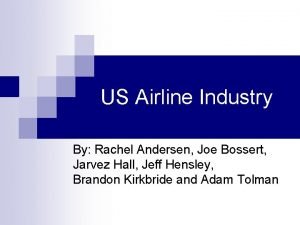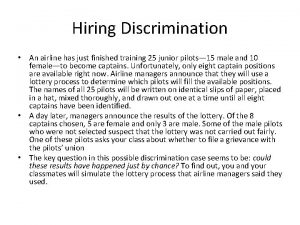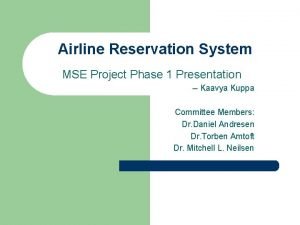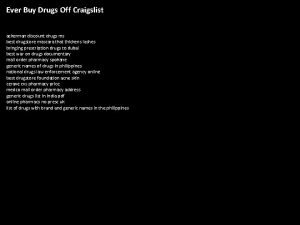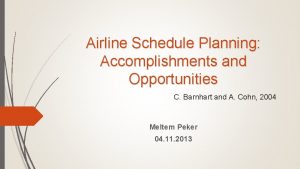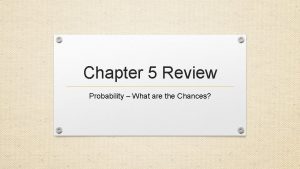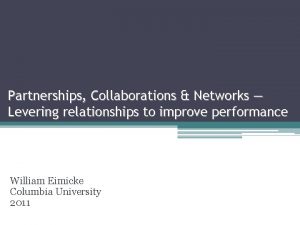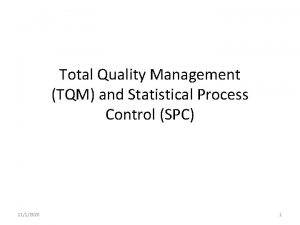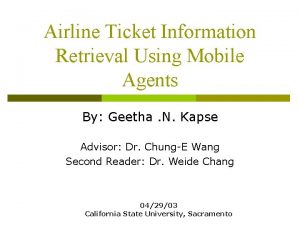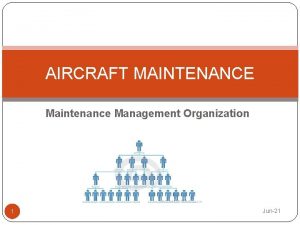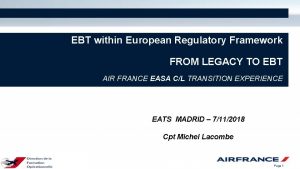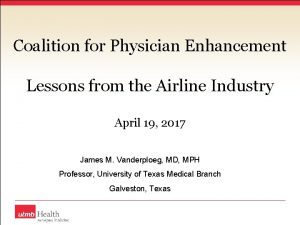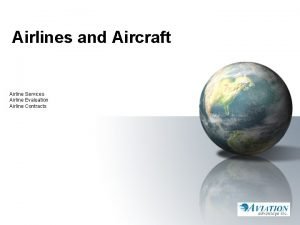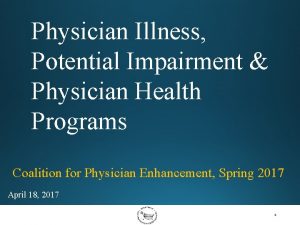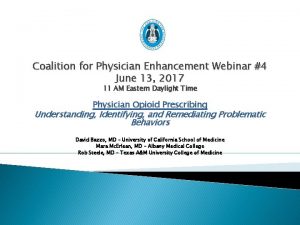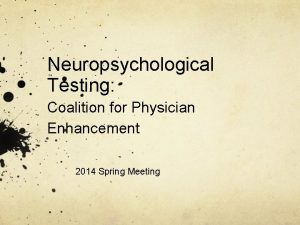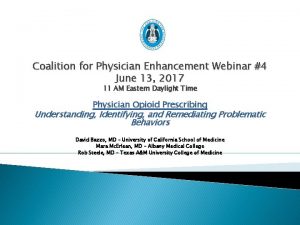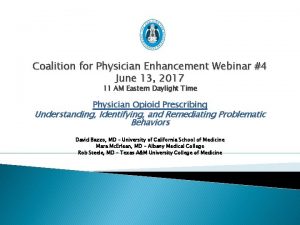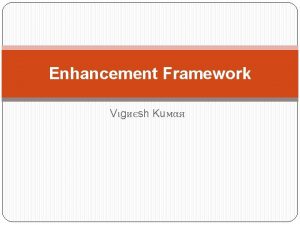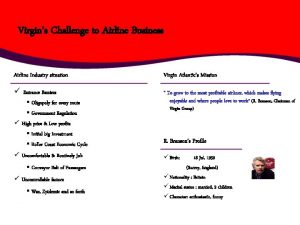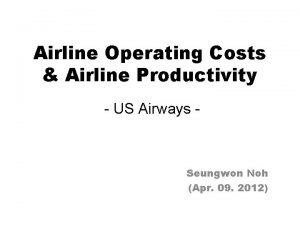Coalition for Physician Enhancement Lessons from the Airline














- Slides: 14

Coalition for Physician Enhancement Lessons from the Airline Industry April 19, 2017 James M. Vanderploeg, MD, MPH Professor, University of Texas Medical Branch Galveston, Texas

Overview • What the medical profession might learn from the airline industry • Comparison of initial and ongoing training and maintenance of knowledge/skills • Process for re-entry into an airline pilot position • HIMS Program – an example of rehabilitating and re-integrating the troubled pilot

Similarities between Physicians and Airline Pilots • Both are intelligent, highly trained, highly skilled practitioners of their trade • Both have high stakes jobs • Responsibility • Leadership • High consequences for mistakes • Both tend to attract Type-A personalities with narcissistic traits • Both are challenging to deal with when trouble arises

Training and Skill Assessment Comparison Step Education Airline Pilot License Physician Medical Degree Specialized Training Specific Training Recurrent Training Currency Airline Transport Rating (ATP) Residency/Fellowship New type of aircraft (3 -6 wks) New procedure (? ? ? ) CME MOC & exam every 10 Every 6 months (1 -2 wks) (1 -2 years Take -offs/landing, instrument Take-offs/landing, instrument ? ? ? Hospital approaches, night -time TO/L credentialing ? ? ? night-time

Training and Skill Assessment Comparison Step Airline Pilot Physician Education Pilot License Medical Degree Specialized Training Airline Transport Rating (ATP) Residency/Fellowship Specific Training New type of aircraft (3 -6 wks) New procedure (? ? ? ) CME Recurrent Training Every 6 months (1 -2 wks) Currency Take-offs/landing, instrument ? ? ? Hospital approaches, night-time TO/L credentialing ? ? ? MOC & exam every 10 years

ATP Currency Requirements For every type of aircraft: • Recurrent training every 6 months* • Daytime: 3 take-offs and landings every 90 days • Nighttime: 3 take-offs and landings every 90 days • Within preceding 6 calendar months: • Six instrument approaches • Holding procedures and tasks • Intercepting and tracking courses demonstration * Airline Advanced Qualification Program exception

Trouble Spots • Upgrade from F/O (co-pilot) to Captain • Upgrade from one aircraft type to another • Example: Boeing 737 to 767 • Return after furlough or long illness • Return after alcohol/substance abuse treatment • Retraining after performance issues Number one prevention of commercial airline accidents = two pilots in cockpit

HIMS Program Human Intervention Motivation Study • Began in 1974 (in development 1970 – 1974) • Collaboration between FAA, Major Airlines, Pilots Union • Program to identify, treat, and rehabilitate airline pilots with alcoholism • Now available to all levels of pilots with alcohol and/or substance abuse disorders (also used for SSRI meds) • Intensive monitoring program • Approximately 85% success rate for maintaining sobriety

HIMS Program Components • Identification • Self • Intervention • Positive random test or DUI • Inpatient – 28 days. Can use IOP in some cases • “ 90 in 90” AA meetings after discharge, then 3 -5 mtgs/week • Weekly aftercare counselor-led group sessions • Peer-Pilot monitoring • Monthly HIMS Meetings

HIMS Program Components - 2 • Psychiatric and Neuropsychological Evaluations and Testing • HIMS-trained Aviation Medical Examiner (AME) monitoring • FAA grants Special Issuance Authorization Medical Certificate • AME medical exam every six months • Annual Psychiatric evaluation • Alcohol and Drug testing • Monitoring continues for at least 3 years • “Graduates” often become peer-pilot monitors • Relapses can occur but re-treatment and re-entry into the program is possible

Numbers of AMEs and P&Ps

Numbers of HIMS Pilot Monitors

Conclusions from Airline Industry • Airline Industry and FAA utilize extensive training, re-training, and monitoring • Cross-checking for safety is part of the culture • Two-pilot cockpit redundancy reduces accidents from medical events to nearly zero

QUESTIONS
 Coalition for physician enhancement
Coalition for physician enhancement Point to point vs hub and spoke
Point to point vs hub and spoke Airline risk management
Airline risk management Rachel dutch airline
Rachel dutch airline An airline has just finished training 25 pilots
An airline has just finished training 25 pilots Mse reservation
Mse reservation Craigslist london drugs
Craigslist london drugs Airline schedule planning
Airline schedule planning A popular airline knows that in general 95
A popular airline knows that in general 95 Airline cost breakdown
Airline cost breakdown Wa airline
Wa airline Statistical process control in total quality management
Statistical process control in total quality management Airline
Airline Aircraft maintenance organization chart
Aircraft maintenance organization chart Easa ebt
Easa ebt
